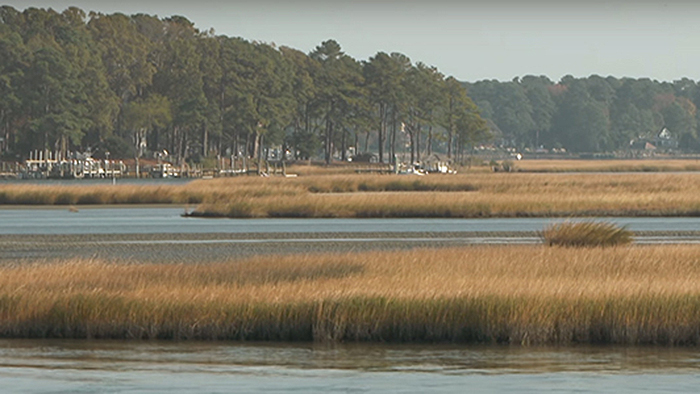A Virginia City Turns to Nature to Counter Rising Seas
Television series shows how Norfolk uses natural barriers to manage frequent flooding
Norfolk, the second-largest city in Virginia, sits just a few feet above sea level in the state’s Hampton Roads region and is almost surrounded by the Chesapeake Bay and numerous rivers. With seas rising and much of the land in and around Norfolk sinking, the city endures frequent floods, even during normal high tides, a threat that is exacerbated by extreme weather. And now that hurricane season has begun, Hampton Roads will need to be even more prepared.
The frequent and costly flooding in the region, and what communities there are doing to prepare and respond to those events, is the topic of an episode of “This American Land,” a public television series commissioned by The Pew Charitable Trusts to showcase environmental issues. The episode, which can be seen here, shows how community leaders, conservationists, and government officials are working together to look for effective ways to adapt to rising seas—lessons that could help flood-prone communities around the country.
Many in Hampton Roads know that inaction can lead to significant economic impacts and property losses and jeopardize personal safety. In Norfolk, residents and officials are acting on that knowledge by restoring wetlands, increasing the use of “natural infrastructure” and redesigning public spaces to make them more resilient to flooding.
One of these projects is in Myrtle Park, an open waterfront space dotted with live oak trees. The park was once a favorite of residents of the adjacent neighborhood, but sea-level rise and recurrent flooding often rendered it unusable. With city funds and federal guidance, the park was reconstructed in 2014 with over 24,000 square feet of new wetlands and has once again become a gathering place for those in the community.
In Norfolk’s 2015 Coastal Resilience Strategy, city officials highlighted the importance of projects such as Myrtle Park that employ natural defenses to temper the effects of flooding. Officials in the city, which is built partially on reclaimed land, recognize the benefits of letting frequently flooded areas revert to their natural state. These living shorelines can provide a first line of defense to reduce the impact of hurricanes, storm surges, and higher tides.
Norfolk could emerge as a model for how a city adapts to rising seas and increasingly severe storms by leveraging what was there long before people arrived: the surrounding natural environment.
Laura Lightbody directs Pew’s flood-prepared communities initiative.








